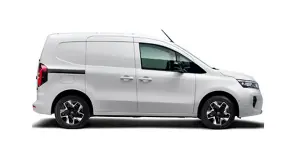Nissan Qashqai 2023 Owners Manual
7.15.7. Driving four-wheel drive (4WD) safely
Your NISSAN is designed for both normal and off-road use. However, avoid driving in deep water or mud as your NISSAN is mainly designed for leisure use, unlike a conventional off-road vehicle.
Remember that Two-Wheel drive (2WD) models are less capable than Four-Wheel Drive (4WD) models for rough road driving and extrication when stuck, for example, in deep snow or mud.
Please observe the following precautions:
Drive carefully when off-road and avoid dangerous areas. Always wear seat belts to help keep you and your passengers in position when driving over rough terrain.
Do not drive across steep slopes. Instead drive either straight up or straight down the slope. Off-road vehicles can tip over sideways much more easily than they can forwards or backwards.
Many hills are too steep for any vehicle. If you drive up them, you may stall. If you drive down them, you may not be able to control your speed. If you drive across them, you may roll over.
Do not shift gears when driving on downhill grades as this could cause loss of control of the vehicle.
Stay alert when driving to the top of a hill. At the top there could be a drop-off or other hazard that could cause an accident.
If the engine of the vehicle stalls or you cannot make it to the top of a steep grade, never attempt to turn around. Your vehicle could tip or roll over. Always drive backwards and straight down in R (reverse) gear.
Never drive backwards with the transmission in N (Neutral) and/or with the clutch depressed and using the brake as this could result in loss of control.
Heavy braking down a hill could cause your brakes to overheat and fade, resulting in loss of control and an accident. Apply the brakes lightly and use a low gear to control your vehicle speed.
Unsecured cargo can be thrown around when driving over rough terrain. Properly secure it so that it will not be thrown forwards and cause injury to you or your passengers.
To avoid raising the centre of gravity excessively, do not exceed the rated capacity of the roof rack/gear bin (where fitted) and evenly distribute the load. Secure heavy loads in the luggage area as far forwards and as low as possible. Do not equip the vehicle with tyres larger than specified. This could cause your vehicle to roll over.
Accelerating quickly, sharp steering manoeuvres or sudden braking may cause loss of control.
Do not drive beyond the performance of the tyres, even with 4WD. Sudden acceleration, steering or braking may result in loss of control and could cause the vehicle to become stuck.
If at all possible, avoid sharp turning manoeuvres, particularly at high speeds. Your 4WD vehicle has a higher centre of gravity than a 2WD vehicle and can tip over more easily. The vehicle is not designed for cornering at the same speeds as conventional 2WD models any more than low sports cars are designed to perform satisfactorily under off-road conditions. Failure to operate this vehicle correctly could result in loss of control and/or a rollover accident.
Do not grip the inside or spokes of the steering wheel when driving off-road. The steering wheel could jerk and injure your hands. Instead, drive with your fingers and thumbs on the outside of the rim.
Before operating the vehicle, ensure that the driver and all passengers have their seat belts fastened.
Always drive with the floor mats in place as the floor may become very hot. Particular care should be taken if you are barefoot.
Lower your speed when encountering strong crosswinds. With its higher centre of gravity your NISSAN is more affected by gusty side winds. Slower speeds ensure better vehicle control.
Be sure to check the brakes immediately after driving in mud or water as specified in
.Whenever you drive off-road through sand, mud or water as deep as the wheel hub, more frequent maintenance may be required. For details, refer to the separately provided Warranty Information and Maintenance Booklet.
Rinse the underside of the vehicle with fresh water after driving through mud or sand. Remove any brush or sticks that are trapped.
Install the same size of winter tyres on all four (4) wheels (such as studless tyres) or install snow chains to the front wheels when driving on slippery roads (e.g. after a snowfall) and drive carefully using 4WD.
Avoid parking your vehicle on steep hills. If you get out of the vehicle and it rolls forwards, backwards or sideways, you could be injured.










